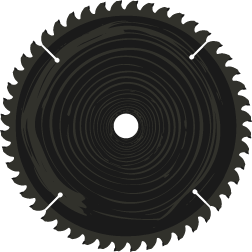
Enabling Exploration
Overview
This exhibition was the culmination of a collaboration between the winter 2020 Ceramics and Furniture Design studios. The goal was to create an art exhibition with inclusive and accessible aesthetic experiences for all viewers.
The gallery design and layout emphasizes principles of universal accessibility and attempted to explore the boundaries of non-visual art. With the focus on encouraging exploration and tactile interaction, users with physical or cognitive disabilities have a unique opportunity to engage with the art created.
Production
This project was conceptualized, designed, and fabricated over a 10-week studio with Professor Kyu-ho Ahn. After an initial set of small, individual projects and research throughout the first 3 weeks, the studio was asked to work cohesively to create an armature or housing in which the work of the ceramics studio could be displayed. Graduate students were deputized to lead teams responsible for various aspects of the project.
I was one of the few students whose experience around whirring blades was non-zero. (Prior to the studio I'd designed and constructed a number of small pieces of furniture for myself, and I made heavy use of the wood shop to create models throughout graduate school.) Before mass production could begin, I was given purview over prototyping the joinery, smoothing out the fabrication method, and determining a reasonable structural module. If that sounds like being told to deal with the whole thorny problem for the studio by myself, good—it was. And, I thoroughly enjoyed it.
As a group, we decided the exhibit should be made fastener-free, allowing it to be constructed, deconstructed, and reconstructed both in the shop and in the exhibit space with greater ease. Through a series of experiments, I found that I was able to create the form we were looking for using a modified Japanese chidori joint—more commonly seen in the form of burr puzzles. With the single module prototype approved, I set about creating a custom sled for the Dado saw, and a handful of other jigs to help the rest of the students create pieces that would work with the tight tolerance of the joins.
I spent the remainder of the studio leading tutorials, adjusting the jigs, and doing quality control in addition to working at the head of the production line. Ultimately, I oversaw the milling, ripping, and joining of more than 2,000 board feet of yellow pine.





















